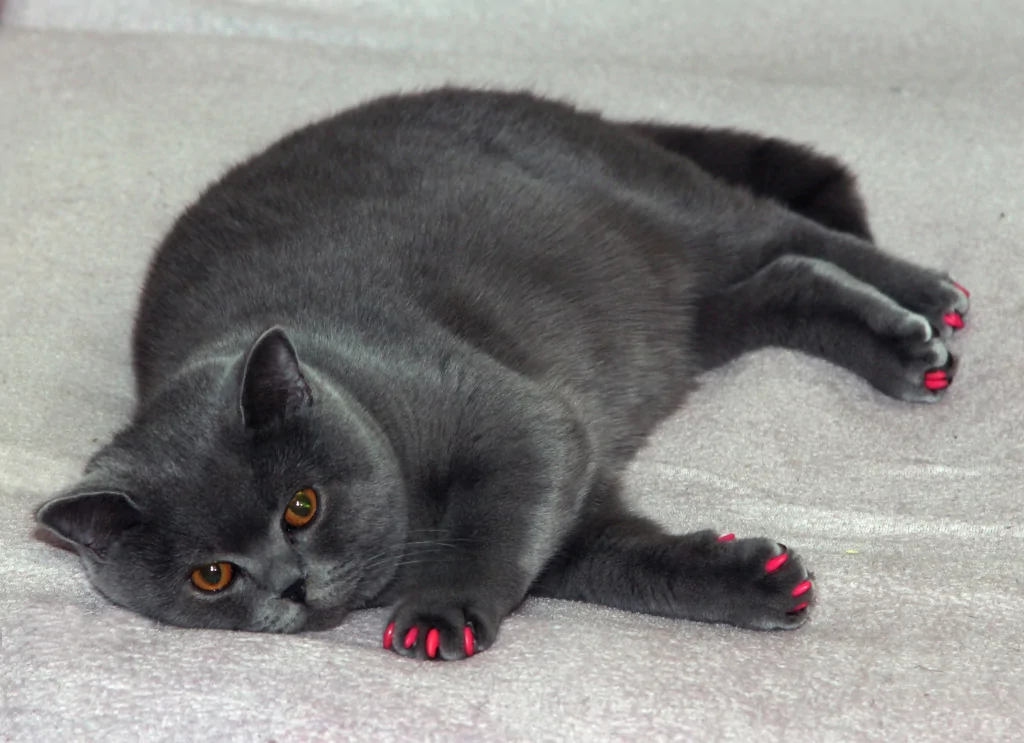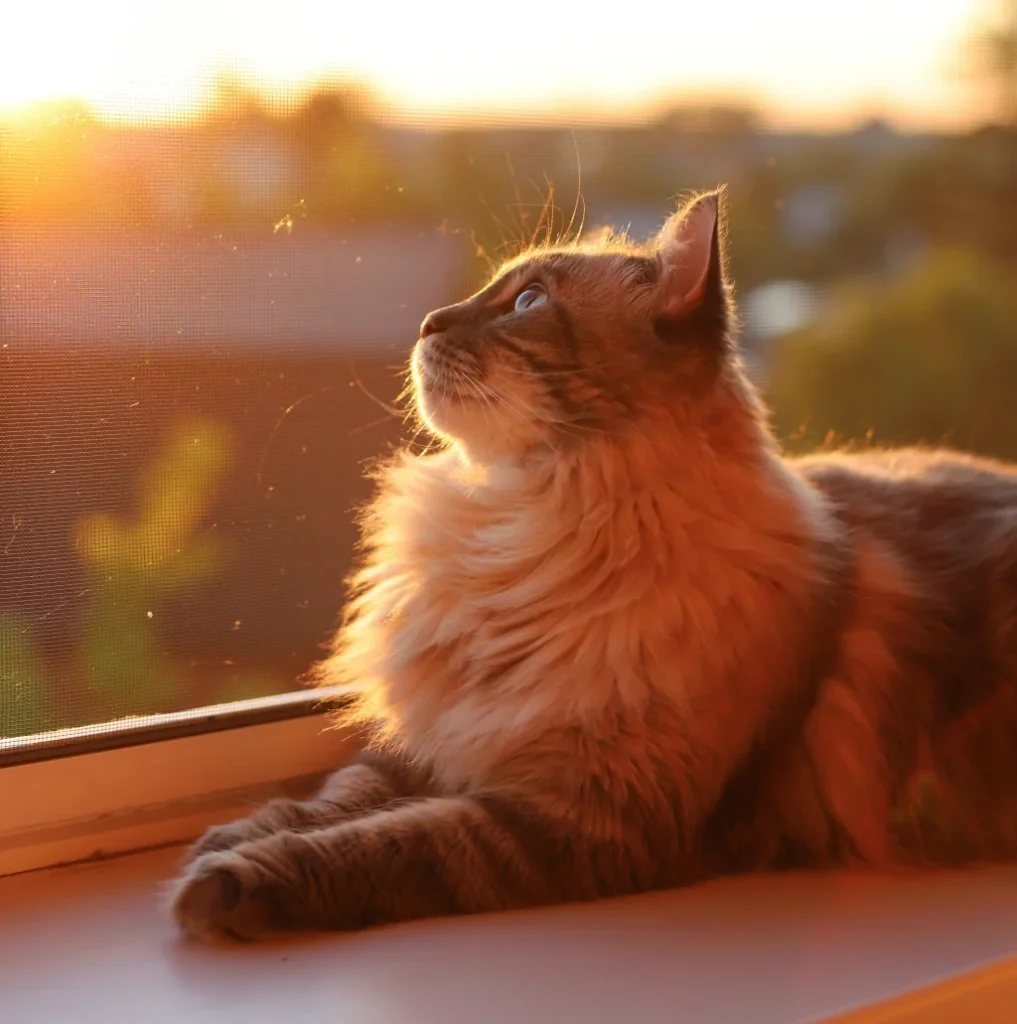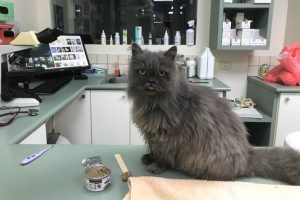Managing diabetes in your furry friend can be daunting, but you’re not alone in this journey.
As a cat parent, you may be worried about the impact of diabetes on your cat’s quality of life or how to keep their condition under control.
I’ve been there too, with my own cat, Smokey, who was diagnosed with diabetes a few years ago. The good news is that with proper care and understanding, you can help your diabetic cat thrive, as my Smokey is!
Let’s unravel the mystery of feline diabetes together and explore how to give your beloved companion the best care possible.

What Is Feline Diabetes and What Causes It?
Feline diabetes, much like human diabetes, is a metabolic disorder where a cat’s body either doesn’t produce enough insulin or doesn’t use insulin effectively.
Insulin is a hormone responsible for regulating blood sugar levels, and when it doesn’t function properly, high blood sugar (hyperglycemia) occurs.
There are two types of diabetes in cats: Type 1, which is caused by a lack of insulin production, and Type 2, which is associated with insulin resistance.
Several factors can contribute to the development of diabetes in cats, including:
- obesity,
- genetic predisposition,
- and age.
Additionally, certain medications and medical conditions can increase a cat’s risk of developing diabetes. By understanding the causes and nature of feline diabetes, you’re already taking the first step in providing the best care for your diabetic cat.
Recognizing the Signs and Symptoms of Diabetes in Cats
Early detection of diabetes in your cat is crucial to prevent complications and ensure a better quality of life. It’s essential to be aware of the signs and symptoms, so you can take prompt action if you notice any changes in your cat’s behavior or health.
- Increased Thirst and Urination. One of the first signs of diabetes in cats is excessive thirst (polydipsia) and increased urination (polyuria). You may find yourself refilling the water bowl more often and noticing a heavier or wetter litter box.
- Increased Appetite and Weight Loss. Diabetic cats often experience an increased appetite (polyphagia) while simultaneously losing weight. This is because their bodies are unable to effectively utilize glucose for energy, causing them to break down stored fats and proteins.
- Lethargy and Weakness. As a result of their bodies not properly utilizing energy, diabetic cats may exhibit lethargy and weakness. You might notice your cat sleeping more or being less active than usual.
- Poor Coat Condition. A cat with diabetes may have a dull, dry, or greasy coat due to their body’s inability to properly absorb and utilize nutrients.
Suggested read: Cat Hydration Guide
Personal Experience:
By keeping an eye on your cat’s behavior and overall health, you’ll be better prepared to recognize the signs of diabetes early on, allowing for a prompt diagnosis and treatment plan.
Remember, if you notice any of these symptoms in your cat, it’s essential to consult your veterinarian as soon as possible.
Treatment Options: Insulin, Diet, and Monitoring
Managing diabetes in cats typically involves a combination of insulin therapy, dietary adjustments, and regular monitoring of blood glucose levels. Let’s explore each of these treatment options in more detail.
Insulin Therapy
Most diabetic cats require insulin injections to help regulate their blood sugar levels.
Your veterinarian will recommend the most suitable type and dosage of insulin for your cat, based on factors like their age, weight, and overall health.
It’s essential to administer insulin injections consistently and follow the schedule provided by your vet to ensure optimal blood sugar control.
Dietary Adjustments
Diet plays a crucial role in managing diabetes in cats. Your veterinarian may recommend a high-protein, low-carbohydrate diet to help regulate blood sugar levels.
Some diabetic cats also benefit from diets with increased fiber content, as it can help slow down the absorption of glucose in the body.
Always consult with your veterinarian before making any dietary changes to ensure they are appropriate for your cat’s specific needs. If you’re not satisfied with your current vet, or you’re simply looking for a second opinion, follow our guide here to choose the right vet for you and your cat.
Monitoring Blood Glucose Levels
Regularly monitoring your cat’s blood glucose levels is an essential aspect of diabetes management.
Your veterinarian will teach you how to use a glucometer to check your cat’s blood sugar levels at home. This will help you track the effectiveness of insulin therapy and dietary adjustments, enabling you to make any necessary changes in consultation with your vet.
In addition to at-home monitoring, your cat will also need periodic veterinary check-ups to assess their overall health and diabetes management.
By incorporating insulin therapy, making appropriate dietary adjustments, and regularly monitoring your cat’s blood glucose levels, you’ll be well-equipped to manage your cat’s diabetes effectively. Remember that successful diabetes management requires close collaboration with your veterinarian, who can help guide and support you through this process.

Caring for a Diabetic Cat: Daily Routines and Support
Taking care of a diabetic cat may seem overwhelming at first, but with a consistent daily routine and a strong support system, you’ll soon find your stride. Here are some tips to help you establish a routine and provide the necessary care for your diabetic cat:
Develop a Consistent Schedule
Creating a consistent daily schedule is crucial for managing your cat’s diabetes effectively. This includes regular feeding times, insulin injections, and monitoring blood glucose levels. Consistency helps maintain stable blood sugar levels and reduces the risk of complications.
Administer Insulin Correctly
Learn the correct technique for injecting insulin, and make sure you follow your veterinarian’s instructions regarding dosage and timing. If you’re unsure, don’t hesitate to ask your vet for a demonstration or clarification.
Keep a Record
Maintaining a log of your cat’s daily activities, insulin injections, and blood glucose readings will help you track their progress and identify any patterns or issues.
This record will also be invaluable during your veterinary appointments, as it provides a detailed overview of your cat’s diabetes management.
Build a Support Network
Caring for a diabetic cat can be challenging, but you don’t have to do it alone. Connecting with other pet owners who have diabetic cats can offer valuable advice, support, and encouragement.
You can join local support groups, online forums, or social media groups dedicated to diabetic cats.
Regular Vet Visits
Schedule regular check-ups with your veterinarian to monitor your cat’s overall health and diabetes management. These appointments are essential for adjusting insulin dosages, assessing dietary needs, and addressing any potential complications.
Remember, your veterinarian is your partner in managing your cat’s diabetes, and they’re always available to help guide and support you through this journey.
Preventing Diabetes in Cats: Maintaining a Healthy Lifestyle
While you can’t entirely eliminate the risk of your cat developing diabetes, you can take steps to maintain a healthy lifestyle that may reduce the chances. Here are some helpful tips to support your cat’s overall well-being:
- Maintain a Balanced Diet. Feeding your cat a nutritious and balanced diet is crucial for their health. Opt for high-quality cat food with appropriate levels of protein, fat, and carbohydrates. When I switched my cat Smokey to a diet with fewer carbohydrates and more protein, I noticed an improvement in his energy levels and overall health.
- Encourage Regular Exercise. Physical activity helps your cat maintain a healthy weight, which can lower their risk of developing diabetes. Provide toys, scratching posts, and engaging activities to keep your cat active and entertained.
- Monitor Your Cat’s Weight. Regularly weigh your cat and consult with your veterinarian to ensure they’re maintaining a healthy weight. If needed, your vet may recommend adjusting their diet or exercise routine.
- Regular Vet Checkups. Schedule regular veterinary appointments to monitor your cat’s overall health and discuss any concerns. Early detection and intervention can make a significant difference in managing potential health issues, including diabetes.
By focusing on a balanced diet, regular exercise, weight monitoring, and frequent vet checkups, you’re proactively supporting your cat’s health and reducing the risk of diabetes.
FAQs
Are some cat breeds more prone to developing diabetes?
Certain cat breeds, such as Burmese, Maine Coon, Siamese, and Russian Blue, have a higher predisposition to developing diabetes, although all cats can be at risk.
How do I monitor my diabetic cat’s blood sugar levels at home?
To monitor your diabetic cat’s blood sugar levels at home, you can use a pet-specific glucometer, which requires a small blood sample, usually obtained from the ear or paw pad.
What lifestyle changes can I make to help manage my cat’s diabetes?
To manage your cat’s diabetes, focus on maintaining a consistent daily routine, providing a balanced diet, encouraging regular exercise, as well as monitoring their weight, and scheduling routine vet checkups.
Can a diabetic cat still live a long and healthy life?
With proper management, including insulin therapy, diet, and monitoring, a diabetic cat can live a long and healthy life, enjoying a similar lifespan to non-diabetic cats.
Alex, a passionate animal lover, has experience in training and understanding animal behavior. As a proud pet parent to two dogs and three cats, he founded AnimalReport.net to share insights from animal experts and expand his knowledge of the animal kingdom.









